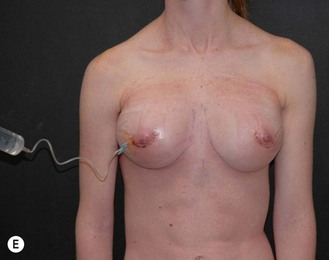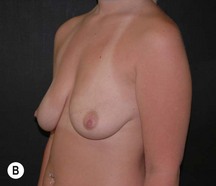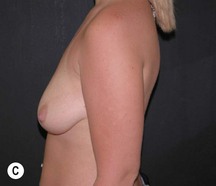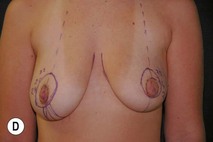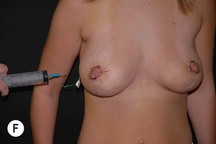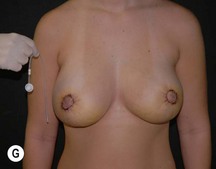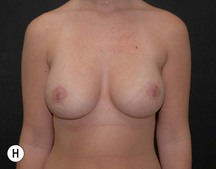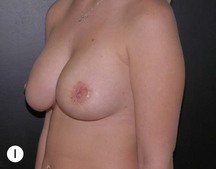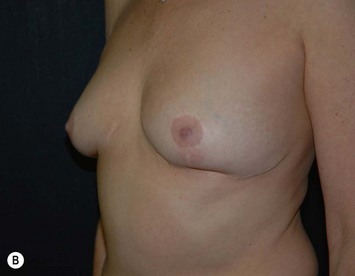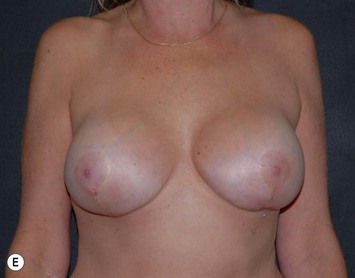CHAPTER 35 Adjustable Breast Implants for Asymmetry and Ptosis
Summary/Key Points
Patient Selection
Fortunately, today’s surgeons have adjustable implants available to them. Adjustable implants offer the surgeon the ability to select the implant based primarily on base diameter and then alter the volume and projection intraoperatively or postoperatively. Adjustable implants include single-lumen saline, double-lumen saline-gel, and adjustable gel. These implants offer considerable benefit to surgeons by simplifying implant selection and allowing for subsequent alteration for the treatment of asymmetry noted here.1–3
Indications
Asymmetry
Debate continues about the incidence of breast asymmetry. One estimate suggests that asymmetry presents in 80% of the population, to the trained eye, and increases to 100% when measured with the appropriate tools.4 In this line of thought, surgeons often counsel patients that some degree of asymmetry is an inevitable. Moreover, attempts to correct the asymmetry after the first operation often lead to further complications. Use of the adjustable implant offers the surgeon the ability to more effectively manage asymmetry correction.
Some physicians may argue that asymmetry cannot be fully corrected. We would argue that this argument may be valid when using fixed volume implants. However, with adjustable implants asymmetry can be accurately corrected. The adjustable implant can be increased or decreased post implantation, leading to high degrees of correction of asymmetry Figs 35.1–35.5 illustrate the presence of asymmetry and scoliosis, followed by installation of an adjustable implant, adjustment of volume, after surgery, and satisfactory correction of the breast defects.





